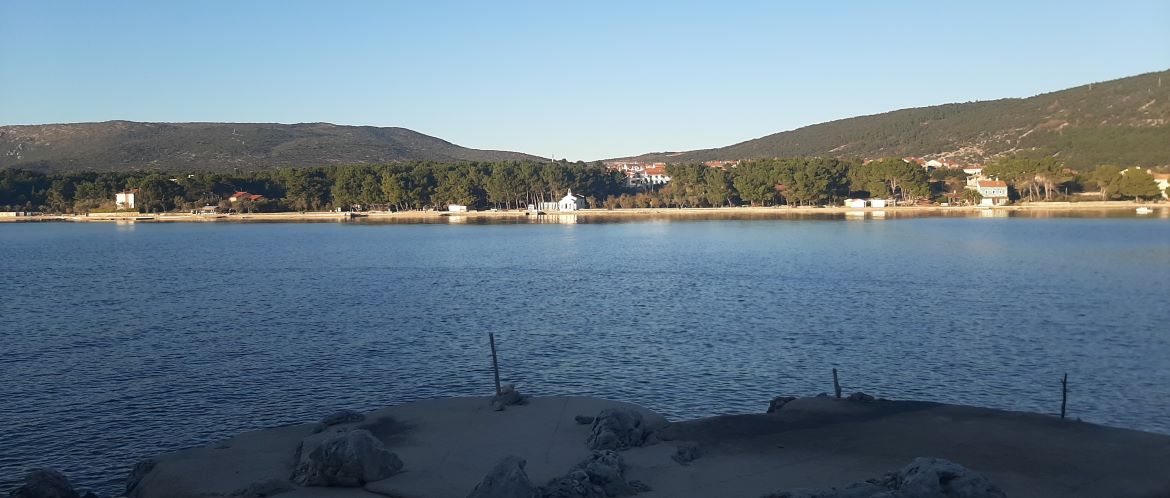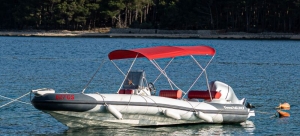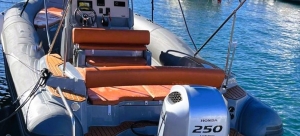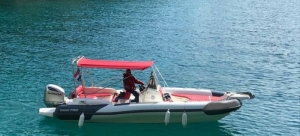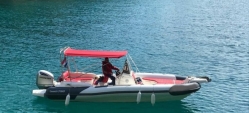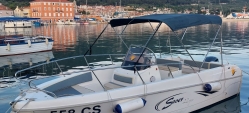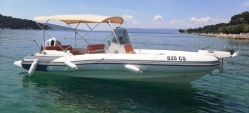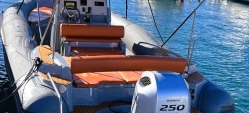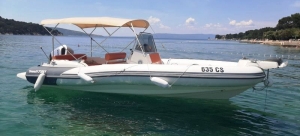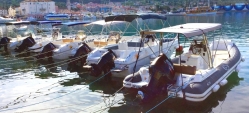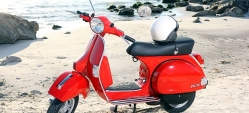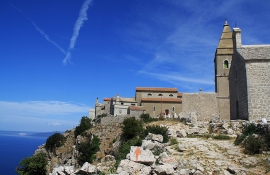
The Romans, therefore, named this place Hibernicia (meaning Winterly), building an unassailable fortress that rises on top of a 378m high cliff, sheltered from the east by a protective wall with two doors.
Once there, the first impression you get is that you are on deck of a firmly anchored ship, carrying you into another time dimension. Traces of the village's glorious past are still clearly visible, such as the gun slits and the port-holes built inthe fortress walls.
It's enough just to climb on the short wall that encircles the city square to feel intoxicated, feeling like a seagull that freely glides over the tempestuous surface of the navy-blue sea.
Concerts of classical music are being held here during the warm summer evenings in an atmosphere of magical concentration, and there is a multi-medial art centre in the works. Standing next to the Church of St. Anthony, on the outskirts of the village, one notices the motel, which was formerly the bell-tower's atrium. There is another church nearby, the Parochial Church of the Holy Virgin Mary, which used to be a canonical seat.
 English
English Hrvatski
Hrvatski Italiano
Italiano Deutsch
Deutsch